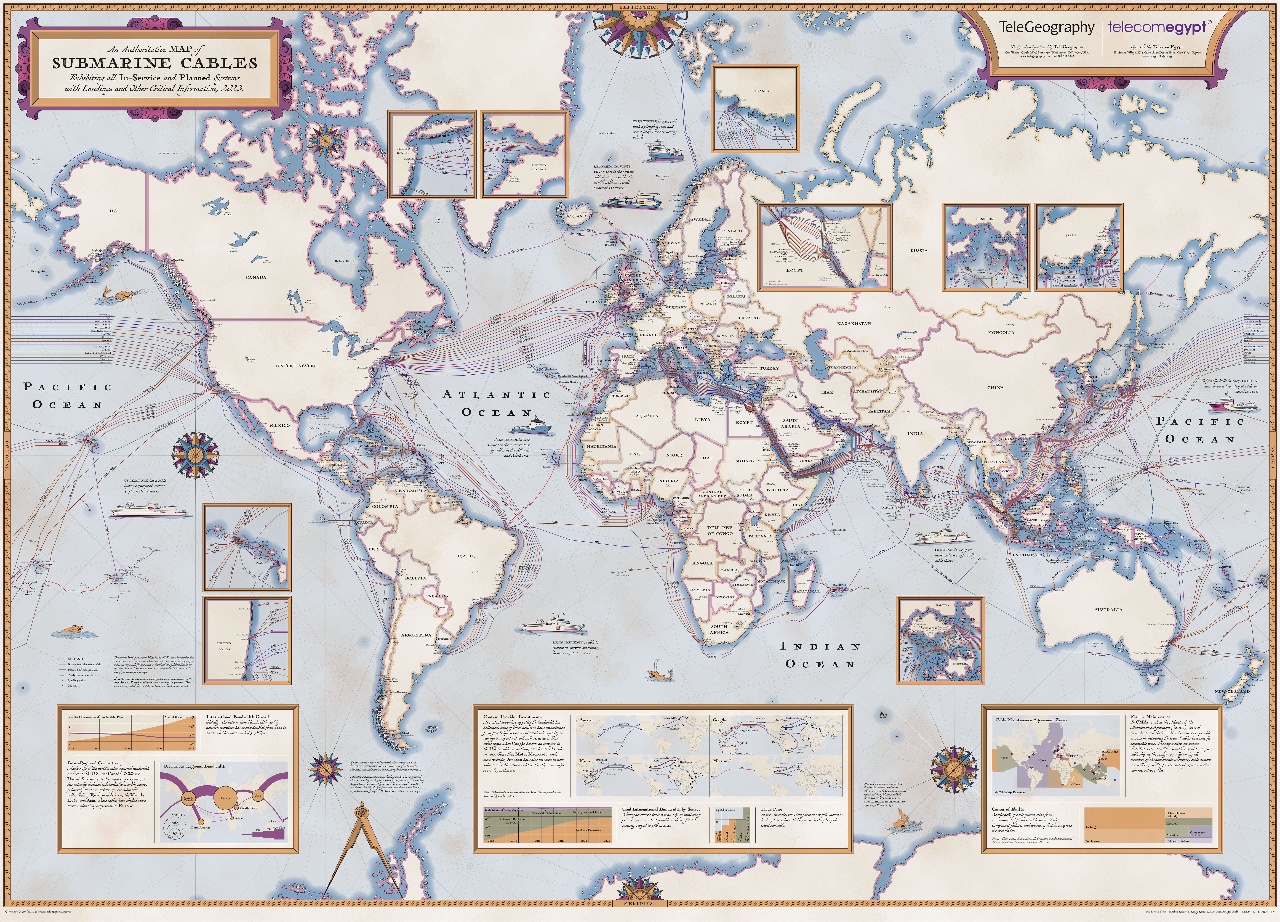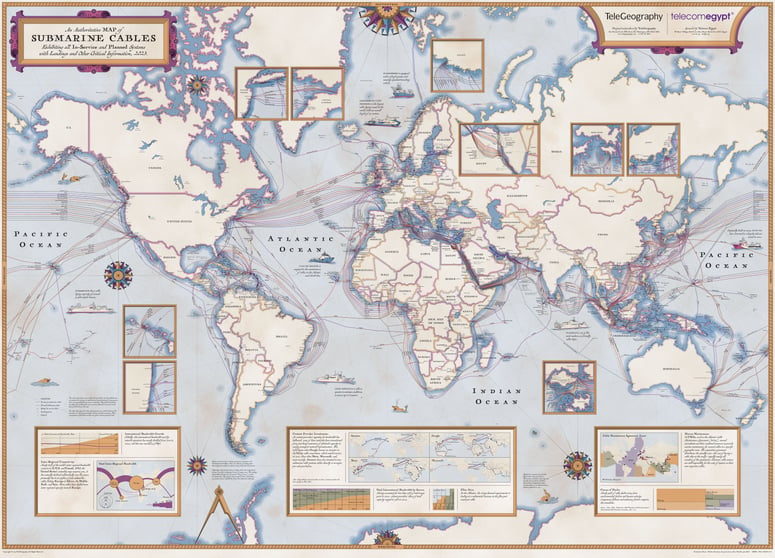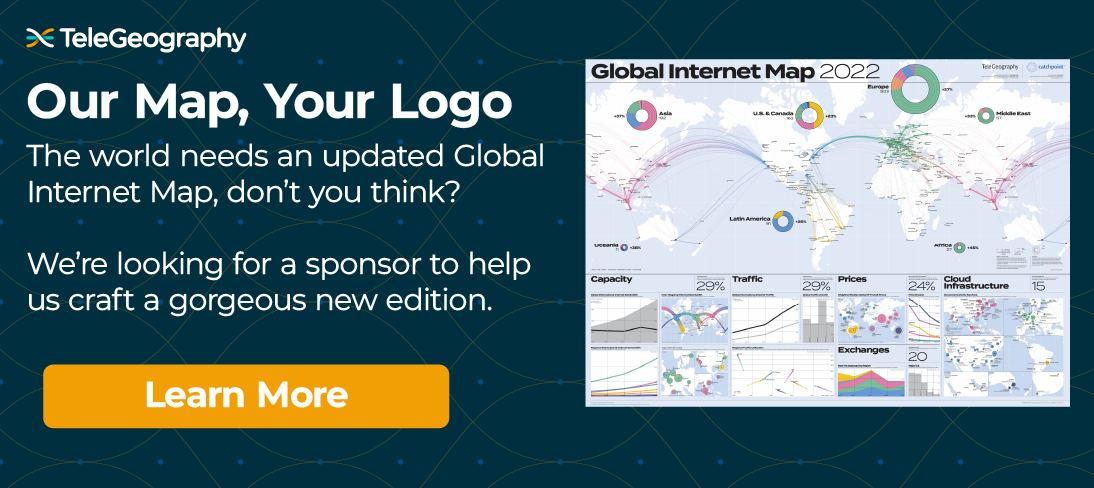What has dashing good looks and depicts 529 cable systems and 1,444 landings that are currently active or under construction?
Sponsored by Telecom Egypt, this edition is chock-full of information on new builds, hubs, bandwidth, content providers, and more.
Here's a sneak peek of what's in store for you.
New Builds
Europe, Africa, and the Middle East
These regions are all experiencing a surge in new submarine cables. Projects such as Equiano and 2Africa are providing a much-needed capacity boost to many countries in Africa and the Middle East. While Marseille, remains a dominant cable landing site in the Mediterranean Sea, new landings in Barcelona, Genoa, and Crete are improving resiliency.
Asia & Pacific
The geography of these regions necessitates heavy use of submarine cables for international connectivity. Over $6 billion of new cables are planned to enter service from 2022-2024 that connect to Asia and Oceania. Several of these new cables are taking unique routes. For example, Echo and Bifrost will be the first cables to directly connect Singapore to the United States. The Apricot cable will be the first cable to link Japan and Singapore with a path that goes east of the Philippines.
Americas
North America is seeing increasing diversity in submarine cable landing locations. New cables are coming into places like Virginia Beach and Myrtle Beach on the U.S. East Coast. On the West Coast, the first trans-Pacific cable landings are planned for Canada and Mexico. Even in south Florida, which has long been a prime location for cables to Latin America, several new cables are planned in a new location in Naples on the west coast of Florida.
Outside of the recently-activated EllaLink cable, South America's submarine cable connectivity remains heavily-focused on the United States. This trend will continue with the planned activation of cables such as Firmina, Carnival Submarine Network-1, and AMX-3/Tikal.
Bandwidth
International Bandwidth Growth: Globally, the international bandwidth used by network operators has nearly doubled from 2020 to 2022, and has now reached 3.9 Pbps.
Inter-Regional Connectivity: Nearly 82% of the world's inter-regional bandwidth connects to the U.S. and Canada. While the United States' centrality may surprise you, it has actually declined substantially over the years, primarily due to an influx of new submarine cables linking Europe to Africa, the Middle East, and Asia. These cables have shifted more inter-regional capacity towards Europe.
If you'd like a physical copy for your wall, head over to our map store.
And we'd like to thank our generous sponsor Telecom Egypt for making this map possible.



